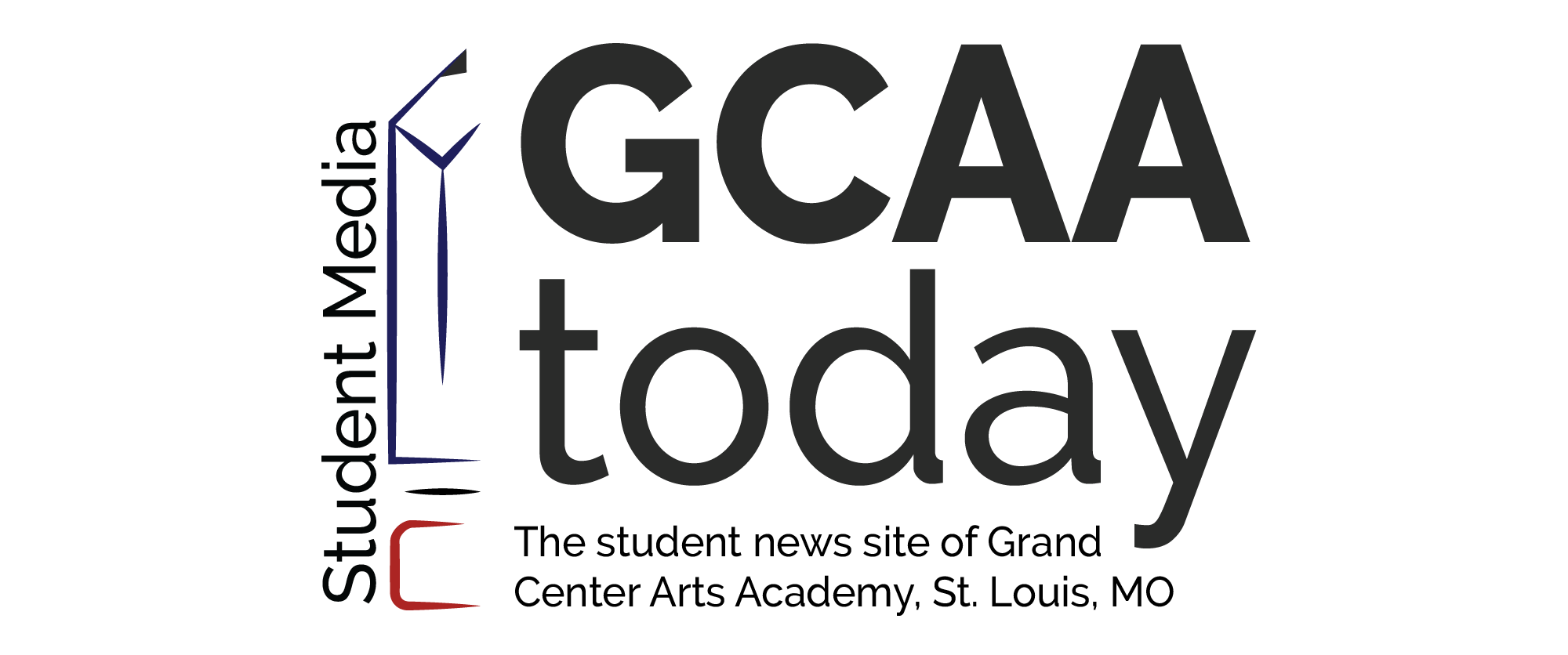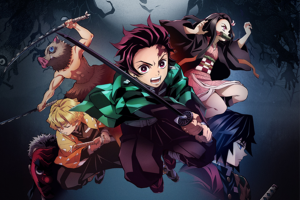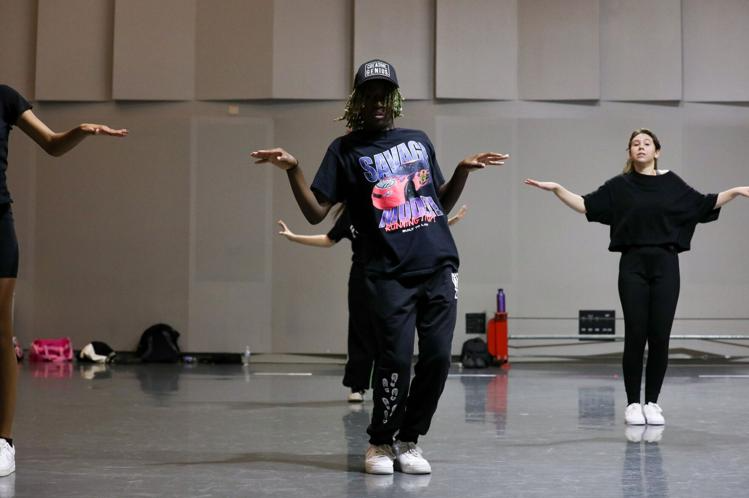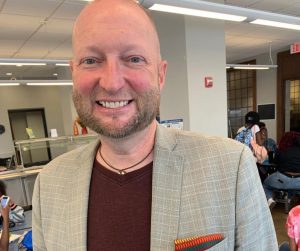Grand Center Arts Academy Funding, Isolation; Obstacles Inside Pathways

Sophie Iffrig, and Keeley Barket raising funds for the school at the ‘Shaw Art fair,’ by charging money for face painting.
March 3, 2015
Out of tune pianos, countless music stands, and few materials. Grand Center Arts Academy is undergoing financial changes ultimately affecting the visual arts, music, theatre, and dance departments.
While some students at GCAA are pleased with the amount of funding each pathway receives, others feel that certain pathways are, in a sense, neglected.
“I think the issue is seclusion of pathways that can later cause cliques,” Sophia Biermann, 9th grade, said.
Biermann implies that, because our pathways are where we meet and make new friends with similar interest, we stick to what we know and make friends within one pathway. However, what if the school had all the necessary materials for conjoined pathway projects? With the amount of students in each class it may be difficult to try and merge whole pathways together, but as the school grows it may be possible to achieve this goal.
“Personally, I’m interested in music and theater as well as visual arts, but it’s difficult to know who else has similar interests when we are confined to one option,” continues Biermann.
“Visual arts does not have enough funding, and every time GCAA does have money, the school seems to spend it on music stands. Our school is not well funded and does not have much money, but I wish it did so that we had more opportunities,” Sophie Iffrig, 9th grader, said.
Iffrig also said she wished that GCAA had more opportunities to showcase talents. She believes that having more performances for pathways could help solve the issue of seclusion.
Rebekah Stern, a 9th grader and also a visual arts student and dancer, agreed that the visual arts pathway does not have enough funding.
“I would like to make an installation and install it, and also attend an art fair. As art students we need things every day, which need to be replaced frequently including: paint brushes, pencils, erasers , paint, paper, sketchbooks, folders, markers, colored pencils, clay, clay tools, the list just keeps going,” Stern said.
Visual artists aren’t the only ones feeling the crunch of the budget. Stern also said that the dance department could use new costumes. She suggested that dance students could visit nursing homes and charities “to earn a little bit of money from the people who appreciate what they’re doing.” Opportunities like this could allow an artist to express their style to guests attending their performances, whether these be art shows, dance competitions, plays, orchestra or band concerts, or any other way to showcase their talents. Stern stated that, “When you go to places like nursing homes who don’t get visited often, there are some people who would probably give some money to your organization to show their appreciation.”
Many parents believe that these problems can’t be fixed with simple fundraisers. In order to help with funding, some parents have recently start the GCAA Fund. According to Dianne Gray, a GCAA parent who helps manage the fund, it “is a component fund of the Greater St. Louis community foundation and can therefore receive new tax deductible charitable donations to ensure GCAA’s long term school financial future.”
GCAA is a relatively new school that is still growing. The GCAA Fund’s goal is to ensure a permanent home for GCAA. Students can contribute to this through showing off their talents, raising money, and voicing their ideas for change.
With a limited budget, we as a school have limited materials which provide limited opportunities for students. In the near future, GCAA hopes to see new paint brushes, dance costumes, textbooks, and many more improvements to ensure each student can show their full potential.
Schools are given money based on the number of students that attend the school for that year. Each enrolled student earns a specific amount of funding for the school. Enrollment determines the budget, and the number of enrolled students is submitted to the board in June. The current budget was built off of the goal of 700 students enrolling this year, which is about 100-200 more students than have ever come to GCAA. The goal was set high because of the amount of construction that was done in the school. Due to this, classes are also a lot larger. The goal of 700, however, was not met and only about 678-680 students were enrolled for this year. The school did not receive the funds for those extra 20-22 kids. Next year, because GCAA will have its first senior class, and juniors are now sending in their intent to return forms, administration will be able to determine how many spots can be opened up for new students.
Each pathway also has a parental booster group that helps to raise funds. The groups raise money through fundraising, renting out facilities, and hosting events. To help increase funding, the administration is working to connect with other art groups and is also renting out spaces like the Sun Theatre and cafeterias; there was even a wedding held at the Sun Theatre!
Administration is hoping to partner with Opera Theater St. Louis which is a summer opera festival held in St. Louis, and with St.Louis Youth Symphony.
The GCAA Foundation fundraising effort was recently started by a group of parents. The foundation is a nonprofit organization that is in charge of raising money for the school. For example; the sound and lights in the theater were paid for by performances. A parent assembly is held once a month as well there is a treasurer there to discuss fundraisers with, and ways to bring in funds for the school.
“Grand Center Arts Foundation is something that has just been started so we hope that eventually it could do things like be able to have enough money to buy these buildings, because we rent these buildings right now. Down the road it would be nice to purchase them, so it’s one of the goals of the foundation,” stated Dr. Frederickson.









